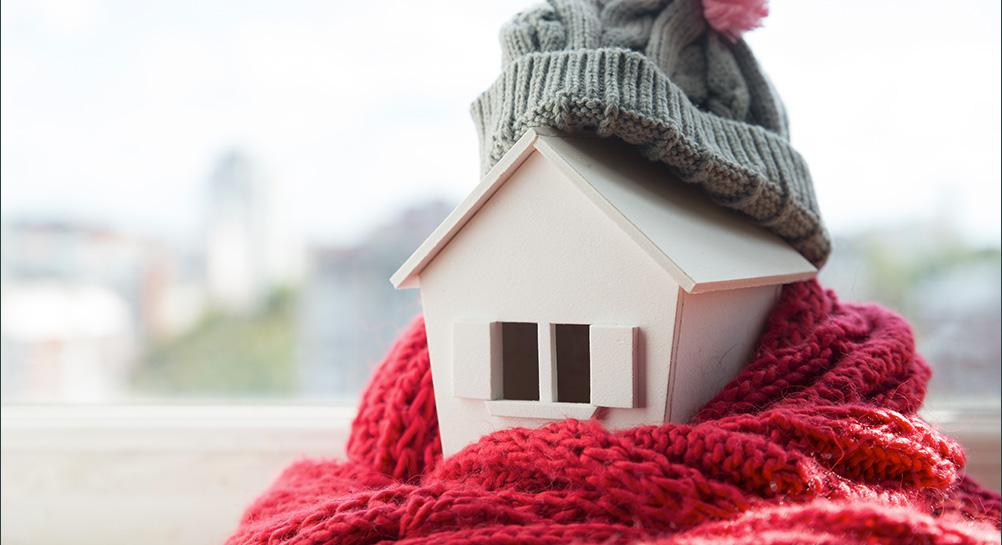Winter brings cozy nights, warm drinks, and festive holidays—but it can also bring freezing temperatures, icy conditions, and unexpected home maintenance headaches. The good news is that with a little preparation, you can protect your home from the harsh effects of winter and enjoy the season with peace of mind.
Whether you’re a first-time homeowner or a seasoned pro, winterizing your home both inside and out is one of the best ways to save money, prevent damage, and keep your family comfortable.
Why Winterizing Matters
Cold weather can put stress on your home in ways you may not expect. Frozen pipes, drafts, clogged gutters, and neglected heating systems can all cause costly problems. By addressing these areas ahead of time, you can avoid emergency repairs and keep your home running smoothly all season long.
Think of winterizing as your home’s version of putting on a warm coat—it’s a little effort now for a lot of protection later.
Inside Your Home
1. Protect Your Pipes
One of the most important winter tasks is keeping your Idaho Falls plumbing safe. When temperatures drop, water inside pipes can freeze and expand, which may lead to cracks or even bursts. To avoid this:
- Insulate exposed pipes in basements, crawl spaces, and garages.
- Disconnect and drain garden hoses before the first freeze.
- Let faucets drip slightly on especially cold nights to keep water moving.
- Know where your main water shut-off valve is in case of emergencies.
A little attention now can save you from expensive water damage later.
2. Seal Drafts and Air Leaks
Cold air sneaking into your home makes your heating system work harder and your energy bills climb. Check windows, doors, and baseboards for gaps, and seal them with weatherstripping or caulk. Adding draft stoppers under doors can also make a big difference.
3. Check Your Heating System
Before the cold sets in, have your furnace or heating system inspected. Replace filters, make sure vents are clean, and test your thermostat. If you have a fireplace, schedule a chimney cleaning to ensure it’s safe to use.
4. Reverse Ceiling Fans
It’s a small trick, but running ceiling fans in reverse (clockwise) during the winter pushes warm air down into the room, helping your home feel cozier without raising the thermostat.
Outside Your Home
1. Clean Gutters and Downspouts
When leaves and debris clog your gutters, melting snow has nowhere to go. This can lead to ice dams, roof damage, and leaks. Take the time to clear gutters and ensure downspouts direct water away from your foundation.
2. Inspect Your Roof
Snow and ice are heavy. Check for missing shingles, cracks, or weak spots in your roof before the first snowfall. Addressing these issues early helps prevent leaks and structural damage.
3. Protect Outdoor Faucets and Sprinklers
Just like indoor pipes, outdoor plumbing needs protection from freezing. Shut off and drain sprinkler systems, cover outdoor faucets, and store hoses inside. A simple faucet cover can help avoid burst pipes in the yard.
4. Trim Trees and Bushes
Snow and ice can weigh down branches, making them prone to breaking. Trimming trees away from your house and power lines reduces the risk of damage during storms.
Safety and Comfort Extras
- Stock up on supplies: Have extra salt or sand for icy walkways, as well as shovels or a snow blower in good working condition.
- Prepare an emergency kit: Flashlights, batteries, blankets, and bottled water can come in handy during unexpected outages.
- Test your smoke and carbon monoxide detectors: Winter heating increases the risk of carbon monoxide buildup, so make sure detectors are working properly.
A Season of Comfort
Preparing your home for winter may take a weekend or two, but the effort pays off with fewer repairs, lower bills, and a safer, warmer environment for your family. From protecting your pipes and sealing drafts inside to cleaning gutters and covering outdoor faucets outside, these steps ensure your home is ready to handle whatever winter brings.
So grab your checklist, set aside some time, and give your home the care it needs. When the first snowfall arrives, you’ll be glad you did.

